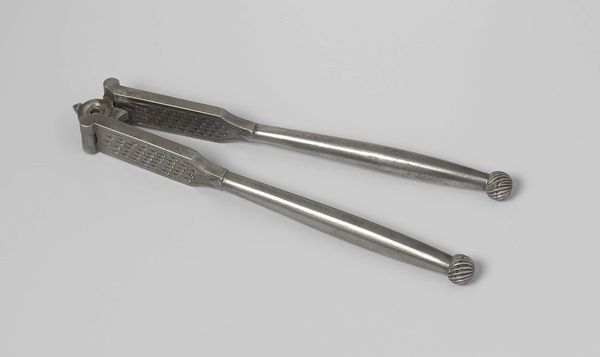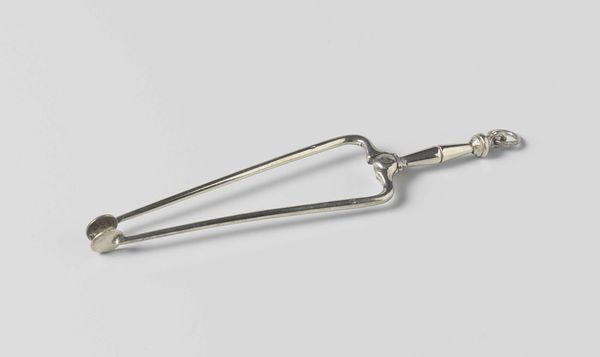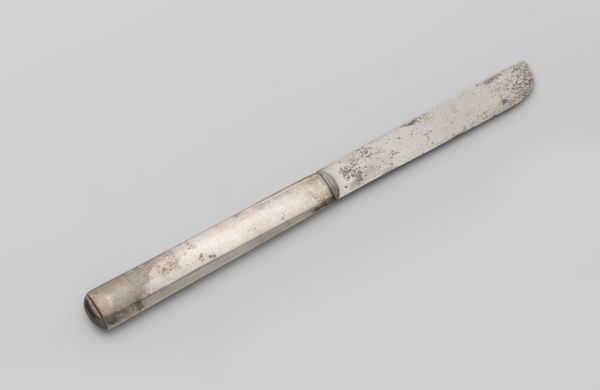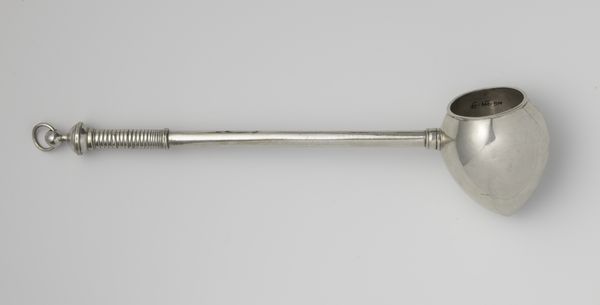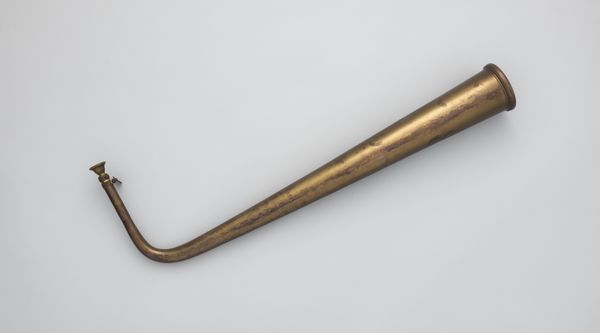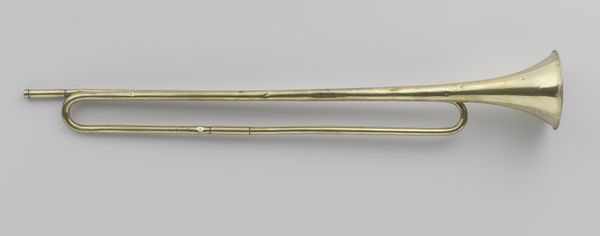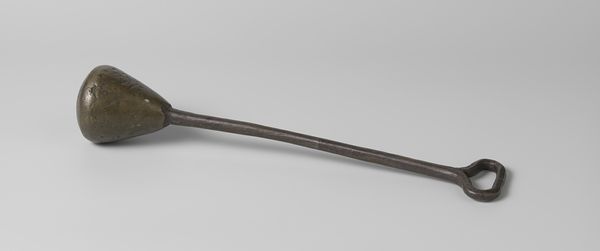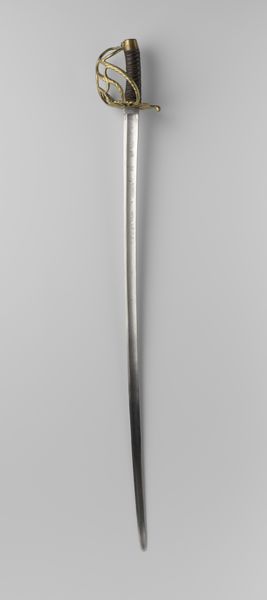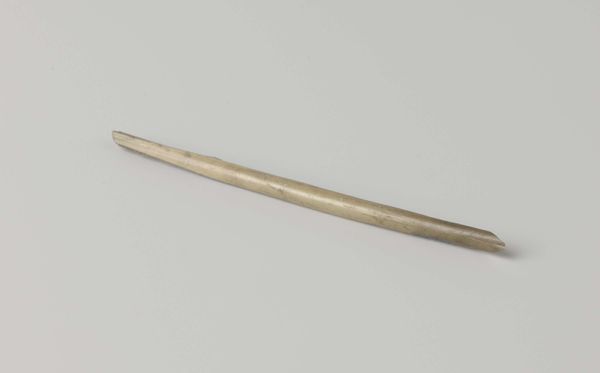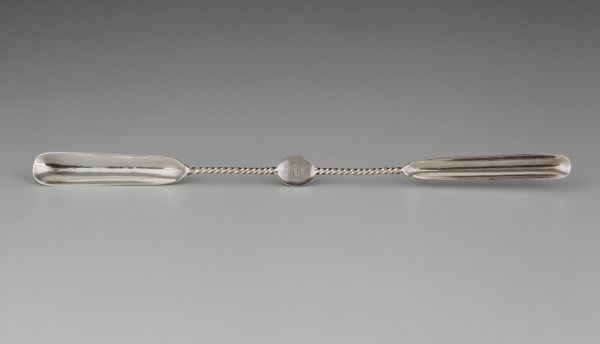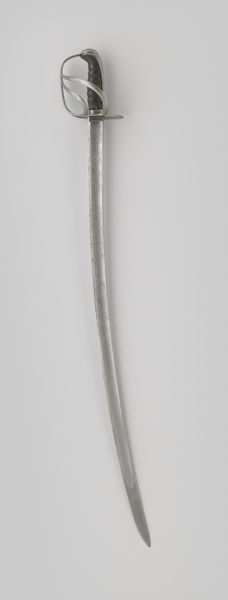
metal
#
technical car design render
#
clear graphic shape
#
3d model
#
contemporary
#
3d printed part
#
metal
#
plastic material rendering
#
virtual 3d design
#
form
#
3d shape
#
3d digital graphic
#
metallic object render
#
line
#
product render
Dimensions: height 0.3 cm, width 6.9 cm, depth 0.6 cm
Copyright: Rijks Museum: Open Domain
This is half of a tie clip, made from metal, at an unknown time by an anonymous maker. It is what remains after being sawn in half. The clip would have been fabricated through industrial processes like die-casting, bending, and surface finishing, all steps performed to high tolerances and at a fast pace. This reflects the broader social context of mass production, where standardized goods are manufactured efficiently to meet consumer demand. The original object would have been relatively inexpensive, catering to a wide market. The act of sawing it in half, however, suggests a disruption of these systems. It introduces a manual, destructive element that is at odds with its initial purpose, transforming the material into something new, perhaps imbued with different meaning or purpose. Considering the material qualities of everyday objects and how they are transformed through human intervention allows us to think about larger questions of labor, value, and the life cycle of objects in consumer society, challenging traditional assumptions about fine art.
Comments
No comments
Be the first to comment and join the conversation on the ultimate creative platform.
